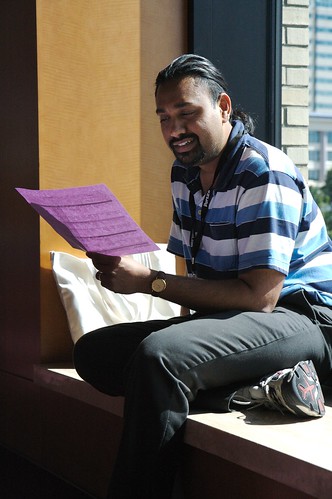Last year I missed my Cameraversary due to the madness of OSCON week. I got my camera a week or two before OSCON 2005, and the conference was the first chance that I really to give the thing a workout, so I have sort of a sentimental thing with OSCON and photography. In fact, you can sort of trace my history by representative shots from OSCON.
This 2005 photo was an oops. It looks cool, but it looks that way because I forgot to change the white balance settings. Sometimes it works out that way.
This has to be the representative photo for OSCON 2006.
I guess in about a week, we’ll see what we get for OSCON 2007.
In the last 12 months, I’ve done a couple of thingsf that I’ve never done before (photographically). Back in December, I shot a sizable portion of a wedding, including all the getting ready stuff (helps when your family is in the wedding). This spring I took a workshop, Zack Arias’ amazing OneLight workshop, which is an unusual thing for me to do. I’m pretty much a learn it yourself kind of guy, but it was worthwhile. Earlier this month the local newspaper picked up one of my photos (login now required, wah. Original picture here.) and sent me a check in exchange.
I am also starting to learn my way (slowly) around Photoshop. I’ve had a fairly big change of heart regarding post processing, especially when compared to two years ago. One of the things I am looking forward to at OSCON is picking Duncan’s brain about Lightroom, since he’s already made the switch. Better integration with Photoshop is one of the reasons I’m considering switching. Curves is another. During our recent family vacation, I took a number of HDR images (yeah, posting soon, but not till after OSCON), and that pretty much means you are working in Photoshop. So for the first time I actually used curves and saw the difference compared to Aperture’s quarter toned levels control.
I recently finished “Light: Science and Magic“, which David Hobby is recommending as supplemental reading for Lighting 102, it’s really worthwhile (if you can find a copy). I’ll post a review and add it to the book list some time after OSCON.

